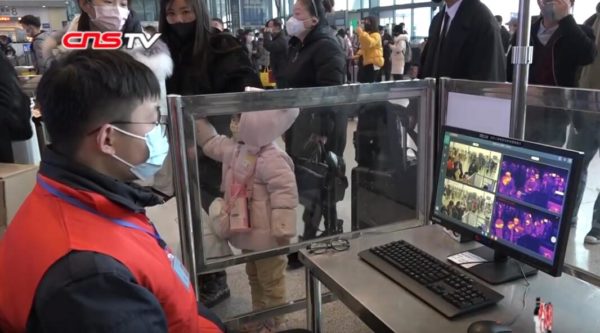
Wuhan, the Chinese city where the coronavirus pandemic began, has partially re-opened after more than two months of isolation.
Crowds of passengers were pictured arriving at Wuhan train station on March 28.
According to reports, people are being allowed to enter but not leave.
Wuhan, the capital of Hubei province, saw more than 50,000 coronavirus cases. At least 3,000 people in the province died from the disease.
However, numbers have fallen dramatically, according to China’s figures. On March 28, the state reported 54 new cases emerging the previous day – which it said were all imported.
Coronavirus: Russia Declares Non-Working Week
Coronavirus: Russia Postpones Vote on Vladimir Putin Staying in Power
Coronavirus: President Trump Signs Largest-Ever US Financial Stimulus Package
As it battles to control cases coming from abroad, China has announced a temporary ban on all foreign visitors, even if they have visas or residence permits. It is also limiting Chinese and foreign airlines to one flight per week, and flights must not be more than 75% full.
The new coronavirus is thought to have originated in a seafood market in Wuhan that “conducted illegal transactions of wild animals”.
Wuhan’s 11 million residents have been shut off from the rest of the world since the middle of January, with roadblocks around the outskirts and drastic restrictions on daily life.
However, roads reopened to incoming traffic late on March 27, according to Reuters.
State media said the subway was open from March 28 and trains would be able to arrive at the city’s 17 railway stations.
All arrivals in Wuhan have to show a green code on a mobile app to prove that they are healthy.
Officials say restrictions on people leaving Wuhan will be lifted on April 8, when domestic flights are also expected to restart.
The new coronavirus emerged in China in December 2019 and more than 3,300 people there have died from the infection – but both Italy and Spain now have higher death tolls.
It is now battling to control a wave of imported cases as infections soar abroad.
This so-called “second wave” of imported infections is also affecting countries like South Korea and Singapore, which had been successful in stopping the spread of disease in recent weeks.
Meanwhile, the virus continues to spread rapidly in other countries around the world.
Nearly 600,000 infections have been confirmed globally and almost 28,000 deaths, according to figures collated by Johns Hopkins University.
